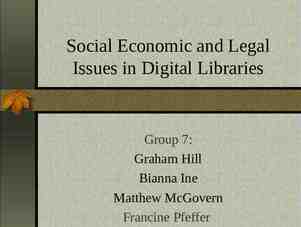PRESIDENTIAL ELECTIONS
27 Slides653.50 KB
PRESIDENTIAL ELECTIONS
NOMINATION The first step in electing a president is the Nomination process. This is where the voters in each party select a candidate. This process begins in January of the election year & goes until June.
PRIMARIES Most States hold primaries. 20-30% of voters participate in the primaries. These are one day intraparty elections.
CLOSED PRIMARIES A primary is a contest within a party to select a candidate. Some States hold Closed Primaries. This means that only registered party members may vote.
OPEN PRIMARIES Open primaries allow all qualified voters to participate. This is what Texas has. The day of the election, voters must decide whether to voter in the Democratic Primary or the Republican Primary.
CAUCUS A few States still hold Caucuses. Only 5-10% of the voters in these States participate in these Caucuses.
CAUCUS The Caucus method is a multi-step process. Voters begin at a local caucus in their neighborhood. All Democrats or Republicans meet at the neighborhood school one evening.
LOCAL CAUCUS For two hours, supporters of different candidates go to one area of the room. Undecided voters stand in the middle of the room. Supports of the other candidates try to persuade the undecideds to support their candidate. At a certain time, supporters of the candidates are counted. Delegates are chosen to attend the District Convention to support their candidates.
DISTRICT and STATE CONVENTIONS The process is repeated and delegates are chosen to attend the State Convention. The process is repeated at the State Convention and delegates are chosen to attend the National Convention.
WHAT CANDIDATES GET FROM THE PRIMARIES AND CAUCUSES Candidates want to win often and early. By winning the early primaries and caucuses, the candidates get media attention and donations to their campaigns.
SUPER TUESDAY The States that have their primaries & caucuses early, have an advantage. – They receive a lot of attention from the candidates. – Most of the candidates are still in the race. Several southern States, including Texas, moved their primaries/caucuses to the second week in March-Super Tues.
STEP 2--THE NATIONAL CONVENTIONS Each party holds their national conventions in August or Sept.
THE NATIONAL CONVENTIONS Three important things happen at the national conventions: – The presidential & vice-presidential candidates are officially nominated – The party platform is written – This is the party’s stand on the issues. – The party is united behind one candidate.
STEP THREE THE CAMPAIGN This is when the Democratic Candidate and Republican Candidate campaign against each other--– LET THE FUN BEGIN!!!!!!!!!!
THE MEDIA Most Americans get all of their info. from television Media slant Polls – Can be used by the candidates to find out how they’re doing with the voters – Can say anything.
PROPAGANDA Plain folks- candidates want the voters to think that they are just like us!!
MORE PROPAGANDA Bandwagon--everyone’s supporting me & you should too!!!! Glittering Generalities--slogans that sound good & mean nothing-– VOTE FOR A BETTER TOMORROW!! – THE EDUCATION PRESIDENT!!
MORE PROPAGANDA Cardstacking-- telling only one side of the story--”I’m great, my opponent is a crook!!” Namecalling Testimonial--have someone famous campaign for you
MORE PROPAGANDA Transfer--hoping the symbol will “rub off” on the candidate
STEP FOUR--THE GENERAL ELECTION!! This is when we go vote!!! It is always held on the Tuesday following the first Monday in Nov.
THE GENERAL ELECTION!! We now use the Australian ballot. – – – – Printed by the State Private Lists all candidates Handed out only at voting precincts Our vote decides WHO gets to cast the electoral college votes!!!
STEP FIVE--THE ELECTORAL COLLEGE Winner take all--in most States, the candidate that wins more of the popular vote, wins ALL of the electoral votes!!!!
THE ELECTORAL COLLEGE Each State decides how the electors for their State will be chosen. In Texas, our electors are chosen at the State Party conventions, the summer before the election.
THE ELECTORAL COLLEGE Electors meet at their State capitals on the Monday following the second Wednesday in December. They cast one vote for President & one vote for Vice-President-– 12th Amendment
THE ELECTORAL COLLEGE Their ballots are sealed & sent to Washington, D.C. and counted in front of a joint session of Congress on Jan. 6, with the President of the Senate (VP) presiding. A candidate must receive a majority of electoral votes--or at least 270 of the 538 votes cast.
THE ELECTORAL COLLEGE If there is a tie, or no one receives a majority of electoral vote – The House of Representatives selects the President from among the top 3 vote getters. – The Senate selects the Vice-President.
THE PRESIDENTIAL INAUGURATION The President and Vice-President are sworn in to office on Jan. 20, at noon – 20th Amendment
































